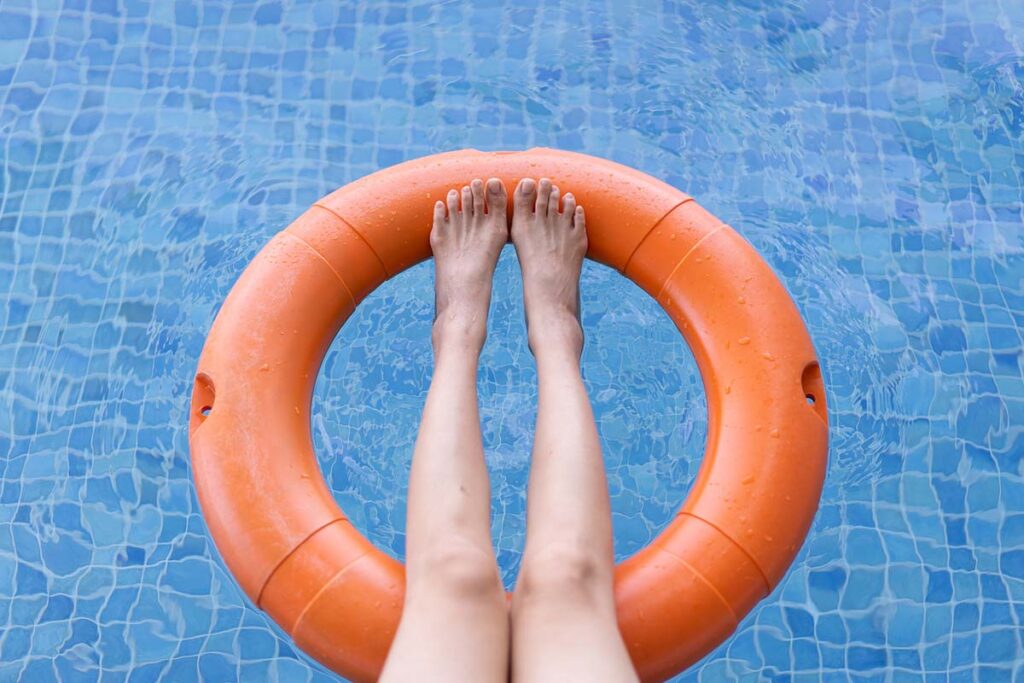If you’re the parent of a young child, water safety is hopefully something you’re keenly aware of. Kids can go underwater in a second. And secondary drowning injuries, like dry drowning, are described frequently in social media reels.
As a professor of emergency medicine and pediatrics, Chris Holstege, MD, is very familiar with water-related dangers. We asked him to share more details of what dry drowning is, and how parents can spot this condition.
Is Dry Drowning Real?
It is possible for children to develop worsening symptoms and injury to the lungs after a potential drowning. However, Holstege cautions against using terms such as dry drowning.
The World Health Organization has advised that terms such as near, wet, dry, passive, active, secondary, and silent drowning should no longer be used. Recently, other physicians, such as those in the American Red Cross Scientific Advisory Council, have also reached consensus that the term “dry” drowning should not be distinguished from “wet” drowning.
What Is Dry Drowning?
Most of the time, when people refer to dry drowning, they mean a condition caused by inhaling water. This causes a vocal cord spasm (laryngospasm), which closes off the airway. These symptoms are usually instantaneous.
Almost 10% of drowning victims have no water in their lungs.
Dry drowning symptoms usually happen right after the near-drowning event. But not always. It’s important to be vigilant for the next several hours. If it seems like your child is struggling to breathe, call 911.
Dry Drowning vs Secondary Drowning
The other condition sometimes called dry drowning is ‘secondary drowning.’
Secondary drowning refers to a situation where someone has breathed water into their lungs. This damages the lung tissue. Unlike the sudden vocal cord spasm, secondary drowning can be slower and build up over time.
Sometimes secondary drowning can happen days after the initial near-drowning. But it’s important to remember that this is a rare occurrence.
Drowning Complication Symptoms
“Any child with a potential drowning should be evaluated by medical personnel,” says Holstege. “If the child is having difficulty breathing, consider calling 911 so they can be seen quickly in an emergency department before symptoms may worsen. If the child is having minor symptoms, such as a persistent cough that is failing to resolve, consider taking them to an urgent care or emergency department.”
What symptoms should prompt an emergency visit? If your child has:
- Shortness of breath
- Continuous cough
- Chest pain
- Fatigue
- Or if their lips look blue
Then you should go to the ER.
How To Prevent Dry Drowning
The most important thing parents can do is try to prevent drowning from happening at all. “With adequate supervision, swimming instruction and public education measures, it is estimated that 85% of drownings can be prevented,” says Holstege.
Constant Vigilance
Parents of toddlers know: they’re fast. Especially when they’re doing something they’re not supposed to. If you’re visiting with friends near a river or lake, then you need to have an agreed-upon system for watching your kids. Never assume your partner or friends can see them.
Large gatherings, like family reunions, are often the most dangerous. When people think everyone else is also watching, they’re more likely to look away for a minute. And a minute is all it takes for things to go wrong.
Pool Safety
Most of the time, when children under 4 drown, it’s in a swimming pool. If your family has access to a pool, then make sure it’s secured. A fence with a locked gate is a good safety measure.
And when you’re visiting friends and family, make sure they also don’t have a toddler-accessible pool.
Water Rules
Getting kids into swim classes, teaching them water safety, and emphasizing rules around bodies of water are all good ways of helping kids protect themselves.
Depending on your child’s age and where you swim, you might also teach them about rip tides, swimming against currents, and how to float while waiting for help.
Be Ready, Not Fearful
Drowning is the leading cause of accidental death in kids under 4. And for every child that drowns, it’s estimated there are 2-3 more who had a non-fatal drowning. It’s good to understand the danger.
But it’s also important to appreciate the good. Swimming is one of the best low-impact cardio activities available. And in the summer, when it’s super hot outside, it can also be a great way to cool off and have fun in the outdoors.
By ensuring water safety and teaching your children how to behave around the water, you can hopefully help them enjoy it for years to come.
